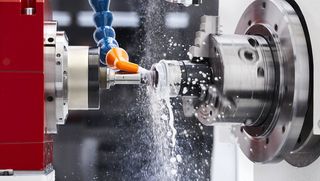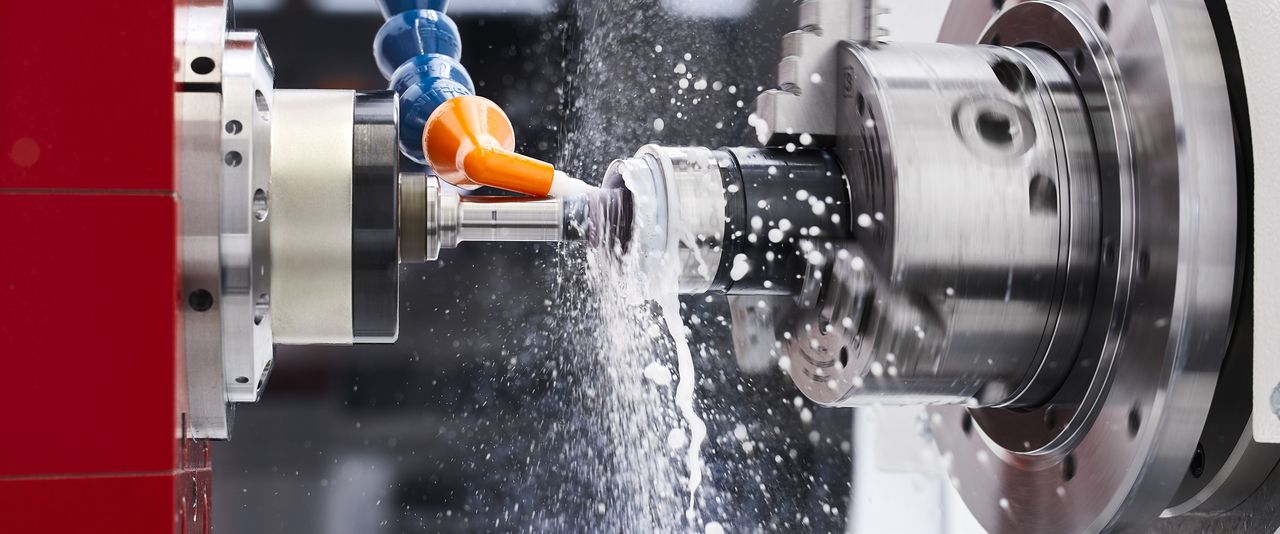Choosing the right cooling lubricant
Oil or water: Which coolant is best for CNC precision grinding?
Precision grinding can generate high temperatures. To prevent thermal damage to the workpiece, this heat must be sufficiently dissipated by an effective coolant. Both oil-based and water-soluble coolants can be used for this purpose. Both types of coolant have their pros and cons. We asked Tom Cappadona from Blaser Swisslube to find out which coolant type best suits different methods of precision grinding. Tom used to work for us at STUDER and now lends his expertise to one of the leading cooling lubricant manufacturers.
The huge importance of coolant in precision grinding
The following applies to production: when the temperature changes, the size of the manufactured parts also changes. In precision grinding where microns are important, the temperature must remain constant. The chips generated during grinding must also be effectively removed by flushing them out with coolant.
Using clean, high-performance coolants has additional benefits, such as extending the working life of the grinding wheel, ensuring the surface quality of manufactured parts remains consistent, and reducing the maintenance work required on the machine.
Advantages of water-soluble coolants
Water-soluble coolants are ideal If you are looking for a simple and cost-effective solution. “They dissipate heat from workpieces very efficiently,” explains Cappadona. “Moreover, the additional systems and peripheral devices needed are simpler than those required for oil-based cooling.”
"However, water-soluble coolants need more upkeep because they are susceptible to bacterial and fungal growth if not properly maintained. This makes regular monitoring essential. Oil-based coolants are usually better when using materials such as HSS or carbide."
Pro tips from Tom:
- Water-soluble coolants can be blended with additives and some concentrates come ready-mixed with inhibitors that prevent bacterial and fungal growth.
- When changing the coolant, Blaser uses a cleaner that kills biofilms for 7 to 10 days. During this period one can continue to grind.
- Bacteria often form when the coolant is stationary and not being circulated. This is reflected in increasing pH values.
- Blaser runs training courses on the maintenance of their water-soluble coolants.
Advantages of oil-based coolants
While it is true that oil-based coolant is more expensive because additional peripheral equipment is required, it also lets machinists achieve high material removal rates and excellent process reliability. “Oil cools better than water because less friction and heat is generated,” says Cappadona. “So, when machining materials such as carbide or HSS, better removal rates can be attained by using oil-based coolants.”
A high-quality base oil with a high flash point is important. The flash point indicates the temperature at which vapors ignite. For example, Blasogrind GTM 10 has a flash point of 190°C, while those of comparable coolants lie between 135 and 160°C.
One disadvantage is that oil-based coolants require a fire suppression system and a cooler to keep temperatures low. Fire protection is essential when using oil-based cooling lubricants.
Which coolant do tool grinders prefer?
Cappadona is very familiar with both types, but many tool grinders prefer oil-based coolants because of their superior lubricity (lubricating capacity), ease of use, and lower levels of cobalt leaching.
The WALTER DIAMOND series of tool grinding machines are famed for their ability to grind carbide and PCD. This requires special coolants, such as Blasogrind GTE 5, which contains minimal additives to keep oxidation as low as possible during the erosion process.
Which coolant do cylindrical grinders prefer?
Tool and die makers often work with carbide containing cobalt, which means they have to use oil-based coolants. Water-soluble coolants are often used in less demanding applications.
Which coolant do surface and profile grinders prefer?
Water-soluble cooling lubricants are used for most surface and profile grinding machine applications. “However, when grinding with diamond or CBN grinding wheels, oil-based coolants are more likely to be employed,” says Cappadona.
Conclusion: Which coolant is better?
Tom Cappadona thinks that both types of coolant have their upsides. “The workshops I visit often already use a coolant of some kind. Their choice usually depends on the specific requirements and preferences of the customer. Machines stay cleaner with oil-based coolants, but the operator ends up dirtier. During my time as a grinder, I therefore preferred water-soluble coolant. These days, I appreciate the advantages of oil."
Other factors can also influence the choice of coolant, such as the task of cleaning workpieces after grinding, which is more time-consuming if oil-based cooling lubricants have been used.
Ready to take precision grinding to the next level?
Contact us. We would be happy to help you reach new levels of precision and productivity so you can recoup the cost of your investment as quickly as possible. Talk to us about your applications and goals.









